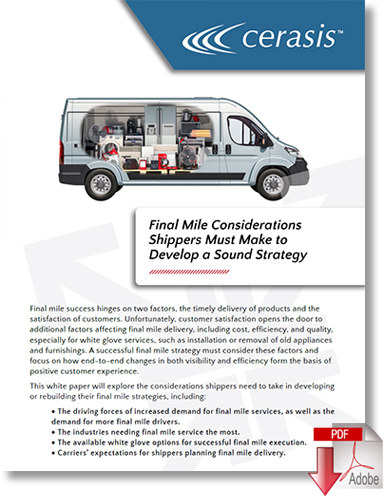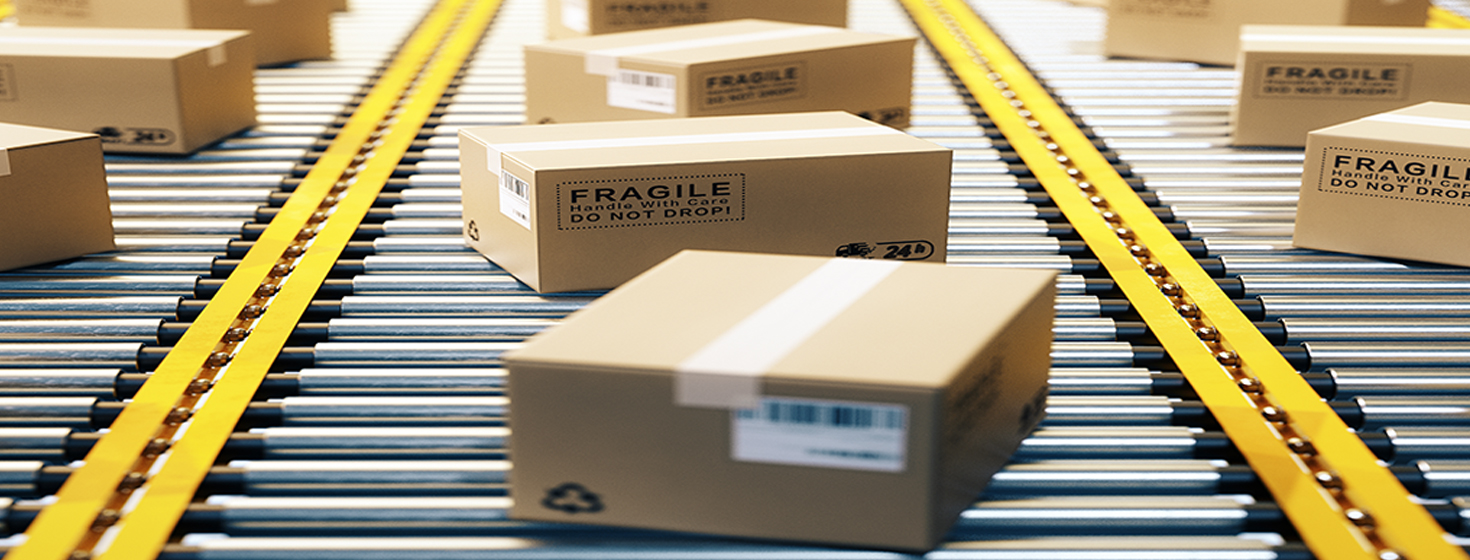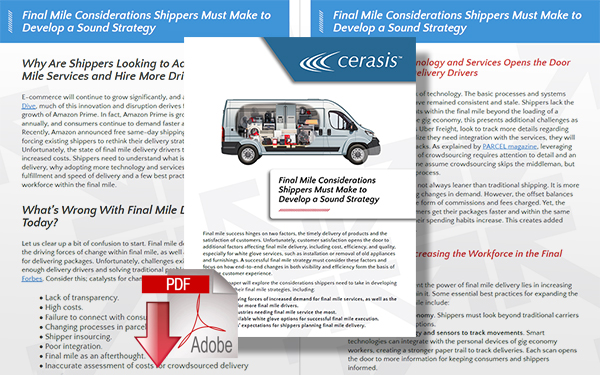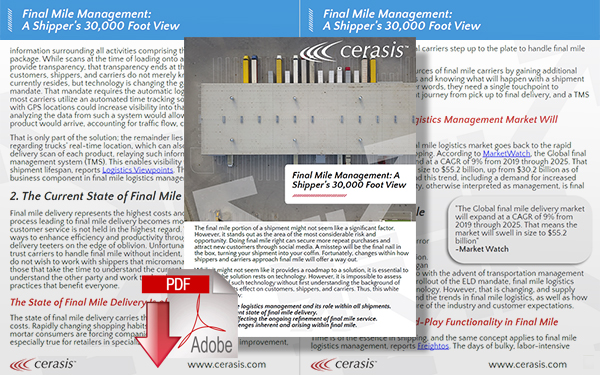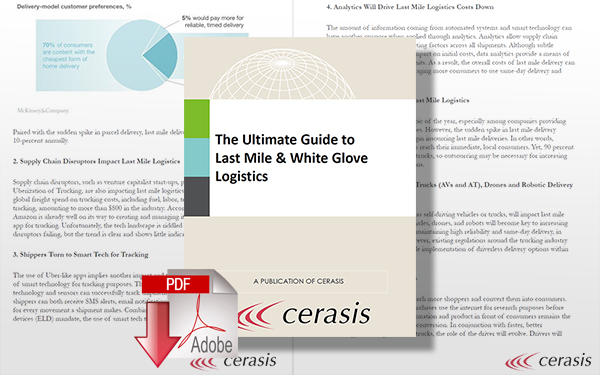Final Mile Delivery Drivers: Why Are Logistics Shippers Looking to Adopt More Final Mile?

Shippers need to understand what is wrong with final mile delivery, and why adopting more technology and services can increase order fulfillment and speed of delivery.
Final Mile Delivery
E-commerce will continue to grow significantly, and according to Supply Chain Dive, much of this innovation and disruption derives from the record-breaking growth of Amazon Prime.
In fact, Amazon Prime is growing at a rate of 30% annually, and consumers continue to demand faster and cheaper deliveries.
Recently, Amazon announced free same-day shipping on millions of products, forcing existing shippers to rethink their delivery strategies to stay competitive.
Unfortunately, the state of final mile delivery drivers today only leads to increased costs.
Shippers need to understand what is wrong with final mile delivery, why adopting more technology and services can increase order fulfillment and speed of delivery and a few best practices for expanding the workforce within the final mile.
What’s Wrong With Final Mile Delivery Drivers Today?
Let us clear up a bit of confusion to start. Final mile delivery drivers can refer to the driving forces of change within final mile logistics, as well as the drivers responsible for delivering packages.
Unfortunately, challenges exist for both securing enough delivery drivers and solving traditional problems, says Rob Taylor via Forbes.
Consider this; catalysts for change include:
- Lack of transparency
- High costs
- Failure to connect with consumers
- Changing processes in parcel management
- Shipper insourcing
- Poor integration
- Final mile as an afterthought
- Inaccurate assessment of costs for crowdsourced delivery drivers
Adopting More Technology and Services Opens the Door to More Final Mile Delivery Drivers
Final mile suffers from a lack of technology.
The basic processes and systems used to manage the final mile have remained consistent and stale.
Shippers lack the capability to track movements within the final mile beyond the loading of a delivery van or vehicle.
In the gig economy, this presents additional challenges as third-party services, such as Uber Freight, look to track more details regarding the final mile.
Until shippers realize they need integration with the services, they will continue to suffer from setbacks.
As explained by PARCEL magazine, leveraging the full flexibility and power of crowdsourcing requires attention to detail and an understanding of needs.
Some assume crowdsourcing skips the middleman, but someone must oversee the process.
Moreover, crowdsourcing is not always leaner than traditional shipping. It is more agile and capable of handling changes in demand.
However, the offset balances of crowdsourcing arise in the form of commissions and fees charged.
Yet, the value remains, and as customers get their packages faster and within the same shipping cost breakdown, their spending habits increase. This creates added profitability for the business.
Best Practices for Increasing the Workforce in the Final Mile
The only way to truly augment the power of final mile delivery lies in increasing the available workforce within it.
Some essential best practices for expanding the workforce within the final mile include:
- Leverage the gig economy. Shippers must look beyond traditional carriers in final mile delivery options.
- Use smart technology and sensors to track movements. Smart technologies can integrate with the personal devices of gig economy workers, creating a stronger paper trail to track deliveries. Each scan opens the door to more information for keeping consumers and shippers informed.
- Take advantage of self-driving cars, robots, and drones. Self-driving vehicles and robots will also serve to increase deliveries and lessen the burden on delivery drivers. Of course, these technologies still need development, but shippers must put the precursor technologies, such as a transportation management system (TMS), into place now.
- Give customers more options for final mile delivery, including BOPIS. Increasing delivery options to include buy online, pick up in-store (BOPIS) will further increase the speed of delivery by putting the burden on consumers. Of course, consumers only see the benefit of picking up products from a safe, secure location.
Bring Technology and the Gig Economy to Your Final Mile Processes With the Right Partner
Technology is evolving, and the gig economy will continue to disrupt final mile delivery drivers.
Fortunately, shippers can reap the benefits and deliver the best possible experiences for consumers, up to and including value-added services within white glove services.
Related Article: What Industries Are Adopting Final Mile Strategies and Why?
Related White Papers
Final Mile Considerations Shippers Must Make to Develop a Sound Strategy New!
This white paper explores the final mile considerations shippers need to take in developing or rebuilding their final mile strategies. Download Now!
Final Mile Management: A Shipper’s 30,000 Foot View
This is a must-read white paper for those shippers who are looking at incorporating Final Mile Logistics Management into their transportation options. Download Now!
The Ultimate Guide to Last Mile & White Glove Logistics
Shippers must adapt to the changing consumer demands and tailor last mile strategies to mesh well with such demands. In this e-book, “The Ultimate Guide To Last Mile & White Glove Logistics”, details these top lessons that shippers need to know about last-mile logistics in the modern era. Download Now!
More Resources from Cerasis
Article Topics
Cerasis News & Resources
GlobalTranz Appoints Executive Chairman Bob Farrell as Chief Executive Officer Amazon’s Drone Delivery Hits Milestone with Federal Aviation Administration Clearance Digital Supply Chain: The Landscape, Trends, Types, and the Application in Supply Chain Management Walmart’s Bid for TikTok Could Benefit the Retail Giant’s Ecommerce and Advertising Businesses The State of Ecommerce Logistics Heading into 2020 Peak Delivery Season Bringing Omnichannel to the Forefront of Ecommerce FedEx’s Fred Smith Optimistic About Economic Recovery as Ecommerce Business Booms More CerasisLatest in Transportation
Baltimore Opens 45-Foot Deep Channel Following Bridge Collapse El Paso Border Delays Cost Juarez $32 Million Per Day in Economic Losses Ranking the World’s 10 Biggest Supply Chains The Top 10 Risks Facing Supply Chain Professionals Walmart’s Latest Service: Ultra Late-Night Delivery City of Baltimore Files Lawsuit to Recoup Money for Collapsed Bridge The Era of Self-Driving Tractor-Trailers Set to Begin More Transportation

